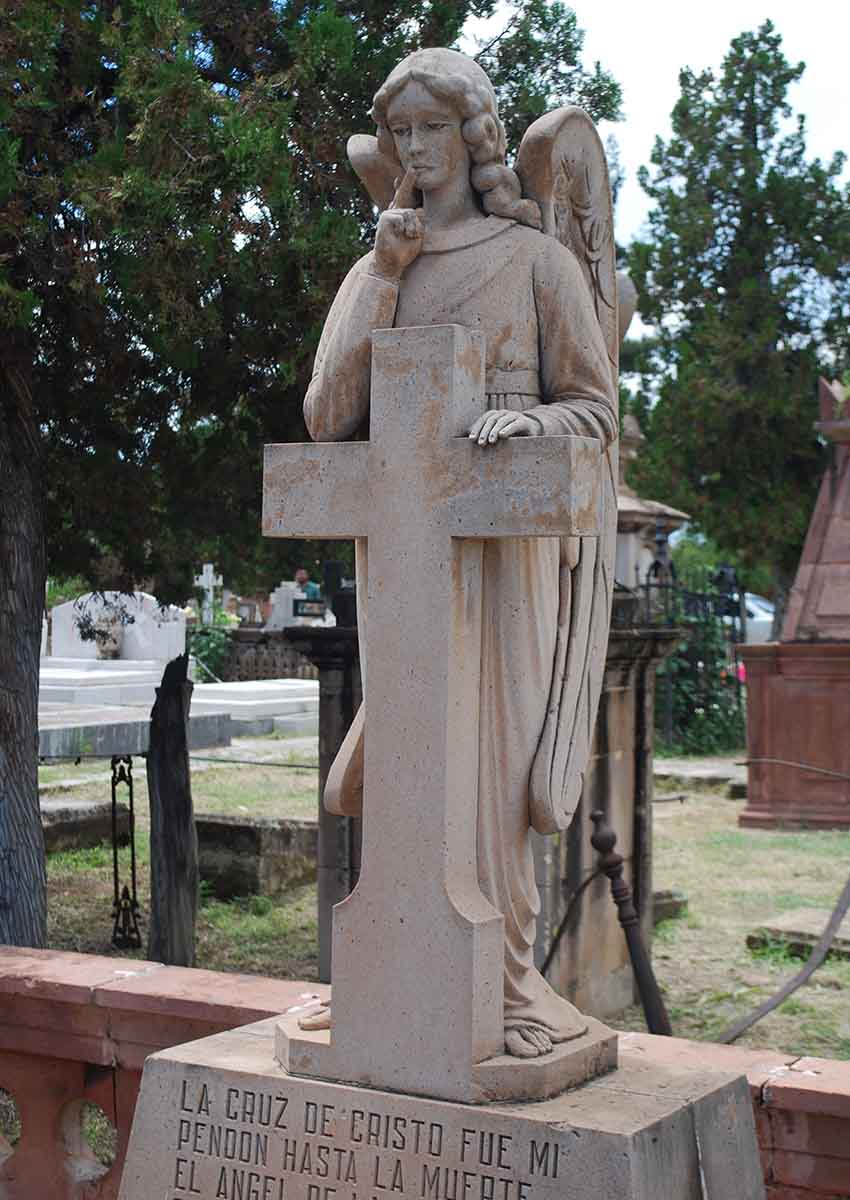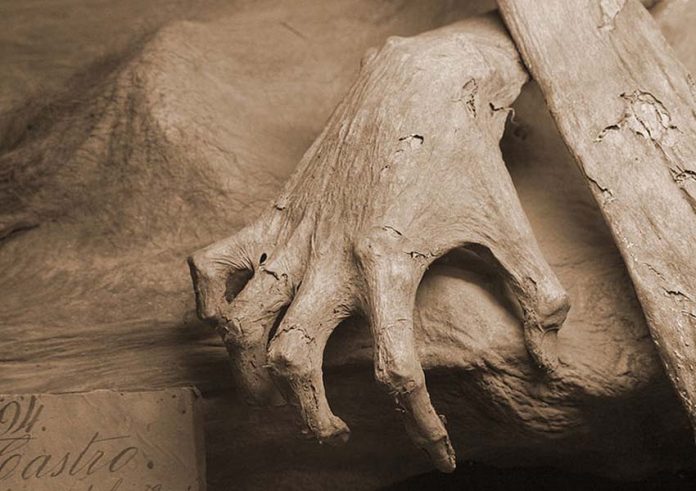Mexico’s world-famous Day of the Dead spotlights the country’s relationship with the end of life, but that doesn’t mean that death is ignored the rest of the year. Its acceptance as an integral part of life means that there are year-round cultural institutions dedicated to the subject.
Without a doubt the best known “death museum” in Mexico is the Guanajuato Mummy Museum in Guanajuato city, which features about 100 mummies exhumed from the crypts of the Santa Paula Cemetery next door. The mummies’ popularity is due to a 1972 film that pitted the iconic lucha libre wrestling star El Santo against them after they came to life. Today, the museum is the third most visited in all of Mexico, welcoming about 600,000 people a year.
For years, it was thought that there was something special about the soil in the cemetery that created the mummies, but the reality is that all were exhumed from abandoned above-ground crypts, which sometimes allowed the interred to dry out and mummify naturally.
The museum is so popular that there was a proposal in 2017 to construct a new complex. However, by 2022, the National Institute of Anthropology and History nixed the city’s plans — not because there was no need for better preservation of the mummies but because the proposed replacement was a sleek modern building with spaces for 53 businesses, an auditorium, cafeteria and souvenir shop. The UNESCO International Council on Monuments and Sites threatened Guanajuato’s World Heritage Site status if the project went through. There was local opposition as well, calling the structure a “shopping mall.”

To date, no suitable alternative proposal has been put forward.
In the past, photography of the mummies was not allowed, but since it is pretty much impossible to keep people from taking pictures with their cell phones, the museum has since opted to charge a small fee instead.
As famous as the Guanajuato mummies are, an even better mummy experience can be had in the small town of Encarnación de Díaz in the Los Altos region of Jalisco.
There are only 32 mummies on display, but many more remain hidden because of a lack of permission from families and other legal considerations. Most of these mummies are in the outfit they were buried in, providing historical context.
One mummy is that of a fetus, only 12 cm long, the smallest in the world, according to Guinness. Like their Guanajuato cousins, these mummies were extracted from above-ground crypts at the Señor de la Misericordia Cemetery.
This museum also has the life stories of many of the mummies, including that of Pedro Ramos, whose uniform is the basis for those worn by museum staff. To provide even more context, there are rooms dedicated to the funerary practices of the region.
The last notable display of mummies is at El Carmen in the south of Mexico City. The entire former monastery is a museum, but the lowest level contains the remains of 12 well-preserved bodies from the 19th century that were discovered during the Mexican Revolution by looting soldiers. The identity of the 12 and how they came to be interred in the monastery is still a mystery.
That they exist at all is unusual as Mexico City has a wetter climate and the crypts are barely above ground. Their preservation is credited to how the monastery was constructed, creating a microclimate.

Then, there are museums dedicated to the concept of death. Mexico has not one but two museums on this topic.
The National Museum of Death in the city of Aguascalientes and the Museum of Death in San Juan del Río look to educate the public on concepts death and the beyond from the Mesoamerican period to the present with exhibits dedicated to fine and folk art, funerary practices and more. The Aguascalientes museum was founded in 2007 as part of the Autonomous University of Aguascalientes, and the Querétaro museum in the 18th century is at the former Santa Cruz Cemetery.
One very creative idea to get people to visit a city cemetery year-round is the Benigno Montoya Museum of Funerary Art in the city of Durango. The museum claims to be the first of its kind in the country.
The museum is not a building but rather several themed paths that have been integrated into the municipal cemetery proper, with QR codes in places of particular interest. The main attractions are the magnificent tombs and sculptures created in the 19th and early 20th centuries by Italian artist Benigno Montoya and his students.
Most of the 700 marked sites have one or more of these artworks, but some have local and regionally notable figures.
Mexico City has its own cemetery/museum integrated into the San Fernando Cemetery. Here the main attraction is history, with visitors coming to see the final resting places of many of Mexico’s famous politicians, soldiers and heroes, such as Vicente Guerrero, Ignacio Comonfort, José Joaquin Herrera, Martíin Carrera, Benito Juárez, Santiago Xicoténcatl, Francisco Zarco, Miguel Miramón and Tomás Mejía.
The cemetery not only offers tours but also temporary exhibitions, conferences, workshops and book presentations.
A bit more touristy is the Cementerio Mexicano (Mexican Cemetery), an exhibit at the Xcaret resort in Quintana Roo. A thoroughly modern creation, it consists of an artificial hill covered in colorful graves representing Mayan, other Mesoamerican and more recent funerary practices.
The hill actually represents a large snail, which was considered to be a messenger to the gods in the pre-Hispanic period. The snail consists of two spirals, one interior and one exterior, and canals in which water runs.
With all these options, you can get a taste of what Day of the Dead means in Mexico year round.
Leigh Thelmadatter arrived in Mexico 18 years ago and fell in love with the land and the culture in particular its handcrafts and art. She is the author of Mexican Cartonería: Paper, Paste and Fiesta (Schiffer 2019). Her culture column appears regularly on Mexico News Daily.
